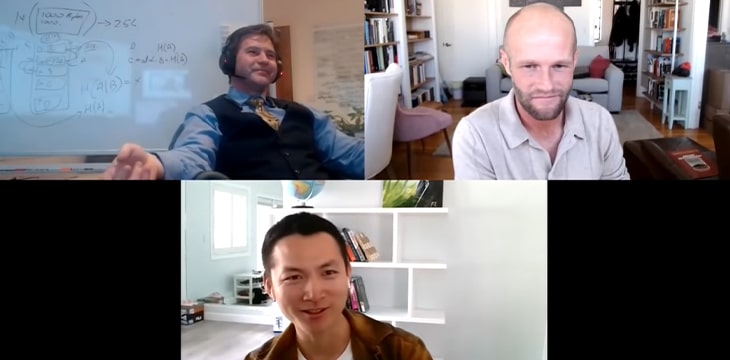You may not understand it… but it’s important that you watch it anyway. That might sound strange, but this week’s “Theory of Bitcoin: Bitcoin Class” episode could set you thinking in new directions—something that could unlock the next great idea. Dr. Craig Wright launches into full lecturer mode this week and uses a whiteboard for the first time. There’s a lot to teach.
Bitcoin is a more open book than you think
Let’s explain “understanding” further. The Bitcoin Class series is, on the surface, highly technical. It might seem like it’s aimed only at developers, and advanced ones at that. But it soon becomes clear that most developers don’t have a thorough understanding of Bitcoin (at least, “thorough” in the Dr. Craig Wright sense) and there’s still a lot of room for creativity.
As Dr. Wright clarifies again, the Bitcoin protocol “is plumbing.” Dennis Ritchie, designer of the C programming language, didn’t need to sit down and explain every potential use case for his creation. He couldn’t have, anyway. It took decades of people experimenting with the language and exploring its possibilities to get to where things are today.
“Everyone’s thinking way too small,” he says, explaining how some concepts we take for granted as integral parts of Bitcoin—such as addresses—are just one example of what the protocol can do. Dr. Wright reminds us that addresses don’t even exist on the blockchain.
The detail in this episode is mainly about how various opcodes can handle data from the blockchain and external sources, and combine it into new transaction inputs. A developer can set all sorts of conditions, even over time, which must be met for the final transaction to validate. There could be complex algorithms created to form parts of a Bitcoin address; it’s not necessary for it to only be a simple pubkey hash.
There’s also a discussion on “masking” operations within the combination, why you would want to do this, and how you’d tell Script what to process and what not to. Even if the details go over your head (and once again, even “students” Ryan X. Charles and Xiaohui Liu are only just starting to grasp them) just understanding conceptually what Bitcoin is capable of could be the first step to something greater.
“It enables us to build perceptrons. And if we can build perceptrons, we can do all sorts of cool stuff,” Dr. Wright says.
All this helps to explain Dr. Wright’s exasperation after years of watching developers attempt to “improve” Bitcoin after he went silent from the project, and why he felt compelled to return. Even years after he stepped forward as Satoshi, on both chains following the BTC/BCH split, they continued to break it.
One classic example is transaction malleability, which was poorly understood and even blamed by some as a flaw. But for Bitcoin to perform to its fullest potential, it’s important that some details of a transaction may be changed before its results are finalized on-chain.
Build your own, according to the rules, but don’t change the rules
You don’t change the way a protocol works just so you can implement concepts you’ve thought of, he says. Some of them might break the way the system works, and others might actually be illegal. Such a change could bring down the entire system just because someone wanted something to work a certain way (this part provides a clearer understanding of the later BCH/BSV split).
Bitcoin allows you to make your own rules by building extra layers/protocols that settle on the main chain. That way, you can have payments or token transfers work however you like. But the protocol governing the main chain itself must be made permanent, or “set in stone.”
The main takeaway from this week’s episode is that it’s not imperative to understand everything Dr. Wright says. Even grasping parts of it conceptually is a start. Watch these episodes once now and then again in future years, and you might be surprised how far your thinking has come.
To watch previous episodes of the Theory of Bitcoin, subscribe to the Theory of Bitcoin YouTube channel here.
Source: Read Full Article
